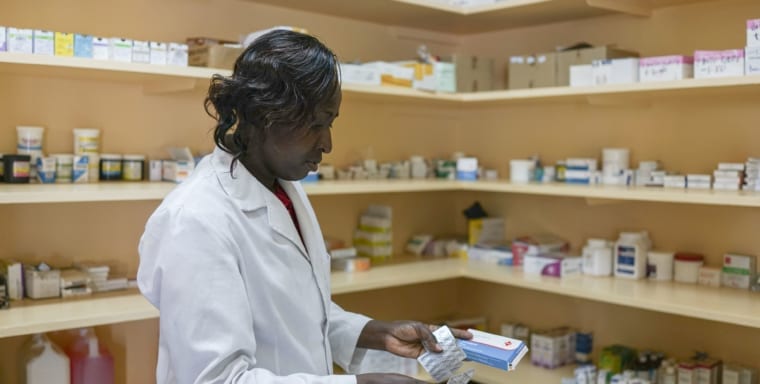The world is now so awash with content it’s hard, maybe even impossible, to separate the wheat from the chaff. You can be forgiven then, for missing what I think was one of the most important health reports of the Millennium Development Goal era.
Released in 2012, just one year after Michael Porter and Mark Kramer published Creating Shared Value and redefined the purpose of the corporation, Competing by Saving Lives made a series of startling claims to companies involved in health.
Healthcare companies create shared value, the report stated, when they compete on the basis of improving health outcomes for the underserved; in other words by saving the most lives in low and middle income countries. To underscore the point, the report shared a shocking graph on the current misallocation of health spending which is reproduced below.
To succeed in creating shared value, the report advised healthcare companies to cultivate five things: (1) a deeply commited CEO, (2) a culture of innovation, (3) performance indicators that include how many lives the company is saving, (4) staff with cross-sector skills, and (5) partners from beyond the business community.
With these assets in place, the report concluded that companies can get down to the business of creating shared value – reconceiving products and markets, redefining value chains and developing local clusters that both generate and capture value.
Four years later and one year into the new Sustainable Development Goal (SDG) era, these claims are even more salient. Not only are healthcare companies being asked to contribute more to the most ambitious set of health goals we have ever imagined, but they have never been better positioned to deliver.
Why?
Because we have entered a period when economic growth is slowing and an inward-looking nationalism is sweeping across Europe and the United States, causing high income country governments to pull back from active roles in international development. With stronger growth continuing in low and middle income countries, most of it driven by the expansion of private sector finance and product markets, companies are better placed than ever to step into the vaccuum.
But with just 14 years to effectively end deaths in pregnancy, childbirth, and childhood, stop the spread of AIDS, TB, and malaria, eliminate child malnutrition, reduce deaths from non-communicable diseases by one third and deaths from road traffic accidents by one half, and meet all unmet need for modern contraception, it is only shared value strategies that have the power to leverage company assets at the scale needed to achieve such ambitious goals. In fact, we will need shared value approaches firing on all cylinders in a majority of healthcare companies by 2020 to have even a chance of achieving the SDGs.
In this environment, the companies that can deliver health benefits to the massive underserved populations on this planet and build stronger businesses as a result, may well turn out to be the biggest contributers in the SDG era.
There is no doubt the early adopters of shared value in global health – Nestlé, Novartis, Novo Nordisk, Becton Dickinson, GSK, Danone, Unilever, and the other companies listed on Fortune’s Change the World list – have a head start and many are busy reinventing their businesses. Efforts like Novartis Access, Becton Dickinson’s Odon Device, Nestlé’s portfolio of shared value initiatives across nutrition, water, rural development and the environment, and Novo Nordisk’s Changing Diabetes® access agenda are leading examples of companies building markets for their products and improving public health at the same time.
But watch out for the global technology powerhouses of Apple, Alphabet, Microsoft, Facebook and Amazon and the new wave of healthcare disruptors including NantHealth, Intarcia Therapeutics, Moderna, Jawbone, Guahao, Stemcentrx, Privia Health, Adaptive Biotechnologies and Reata Pharmaceuticals. Think what this group of companies could do if they aligned their future investments in health with shared value and the SDGs, prioritizing the emerging markets that are both the source of their future growth and the places where public health challenges are most acute. Silicon Valley has already signalled it is going to step up its global development work.
The winning companies who contribute most to the health SDGs will be those who achieve a competitive advantage in executing shared value initiatives across five areas: 1) data quantity and quality, 2) application of new and emerging technologies (e.g. AI/machine learning, DNA sequencing, CRISPR, nanotechnology, drones, 3D printing), 3) network reach and quality, 4) partner quality (government, NGO, academic, business), and 5) leadership quality.
The companies that can activate all of these assets through the kind of collective impact partnerships described by Mark Karmer and Marc Pfitzer in The Ecosystem of Shared Value can potentially contribute more to the achievementof the new health goals than any government or non-profit organization.
But what might these shared value collective impact partnerships look like? Here’s five that we need desperately to accelerate achievment of the health SDGs:

Shared Value in Reproductive Health
Pharmaceutical, insurance, and advertising companies joining forces to dramatically reduce the risks of pregnancy and childbirth by building markets for modern contraception, healthy pregnancy and safe childbirth, especially in sub-Saharan Africa and South Asia;
Shared Value in Reproductive Health
Food and beverage companies joining forces with government agriculture, social welfare and health ministries to build markets for nutritious foods that simultaneously reduce child stunting and female anemia and malnutrition without increasing the risk of diet-related diseases like diabetes and heart disease, especially across South Asia and Latin America;
Shared Value in Safe Roads
Transport and consumer goods companies joining forces with city governments and civil society to reduce deaths from road traffic accidents in the growing megacities of Asia and Africa;
Shared Value in Chronic Disease Control
Medical device, pharmaceutical and technology companies joining forces with food and beverage companies to reduce the diet-related risks of chronic diseases at the same time improving the diagnosis and treatment of cancer, diabetes and heart disease, especially and the Middle East, Oceania, and the Americas; and
Shared Value in Health Data: the Ultimate Public Good
Healthcare and consumer goods companies joining forces with data companies to share their consumer data with public health authorities to map health behavior at the lowest geographic level enabling better forecasts of communicable and noncommunicable disease outbreaks before they become epidemics.
If Carlota Perez is right and we are smack in the middle of the deployment stage of the fifth technological revolution, we can expect to see companies continue to drive shared value in health by applying information and telecommunications technologies at scale in existing and new markets.
But Perez also says we are on the cusp of a sixth technological revolution, when a suite of new health-related techologies (e.g. biotechnology, nanotechnology and bioelectronics) will transform disease prevention, diagnosis and treatment by taking account of individual variability in genes, environment, and lifestyle – what is being called “precision medicine”.
Whether the existing and new technologies usher in an era of better health for humanity – longer life spans and better quality of life – or are captured by a select few, high income countries, will largely depend on how many companies pursue shared value health strategies over the next decade.
The stakes are very high. My bet is on the wide-scale adoption of shared value by a majority of healthcare companies as key to the achievement of the SDGs.




